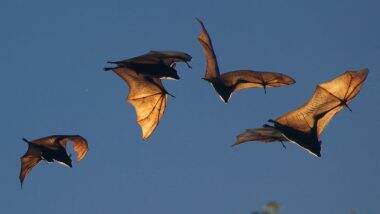Fruit bats have been identified as the culprits behind the Nipah outbreak in Kerala by the Indian Council of Medical Research (ICMR), as per a news report in the Hindustan Times. With this declaration, the long-standing mystery behind the cause of the recent outbreak has been solved.
Although Kerala has been declared safe with no new cases of Nipah detected, the health officials of the state were concerned by the mysterious source of the disease. Bats recovered from the well at ground zero Perambra in Kozhikode tested negative for the virus, which had befuddled the epidemiologists who were working on the case. But the virus has now been sourced to the second batch of bats.
Union Health and Family Welfare Minister JP Nadda has stated: "Scientists have found conclusive evidence of Nipah virus infection in the fruit bats found in the area."
A scientist at the Indian Council of Medical Research told HT on the condition of anonymity that the delay in identifying the source of the infection happened because the wrong bat species was tested. The 21 bats who were tested in May were the insect-eating variety who are not carriers of the virus. The 55, which were trapped in the second round, were fruit bats who tested positive for the deadly virus.
Kerala state has just been declared Nipah virus-free after 17 of the 19 people afflicted by the virus-borne encephalitis were killed. Recently, some musicians and independent filmmakers also released a music video on Nipah. Although the war is won, for the time being, zoonotic illnesses like the Nipah virus infection can always come back.
Rapid urbanisation has been driving the bats out of their habitats. The Nipah virus, which the fruit bats happen to carry, overrides their bodies when they are stressed. The virus is then shed through their urine and faeces, which can then pass on to humans exposed to them.
The virus has been known to jump species. In the 1998-99 outbreak in Malaysia, jumped from bats to pigs and then to humans. It claimed 105 lives then. The swift government intervention and the concerted efforts of the medical staff helped in containing the infection from reaching devastating proportions. As per the HT report, ICMR is now prioritising epidemiological studies to understand virus sequencing, drug sensitivity testing and vaccine strain identification along with preparing the lab network for handling dangerous pathogens.
(The above story first appeared on LatestLY on Jul 03, 2018 10:04 AM IST. For more news and updates on politics, world, sports, entertainment and lifestyle, log on to our website latestly.com).













 Quickly
Quickly


